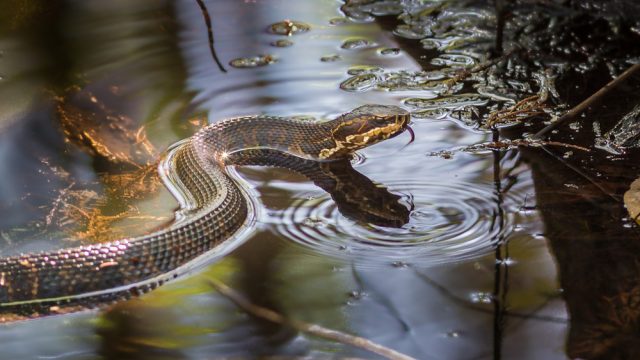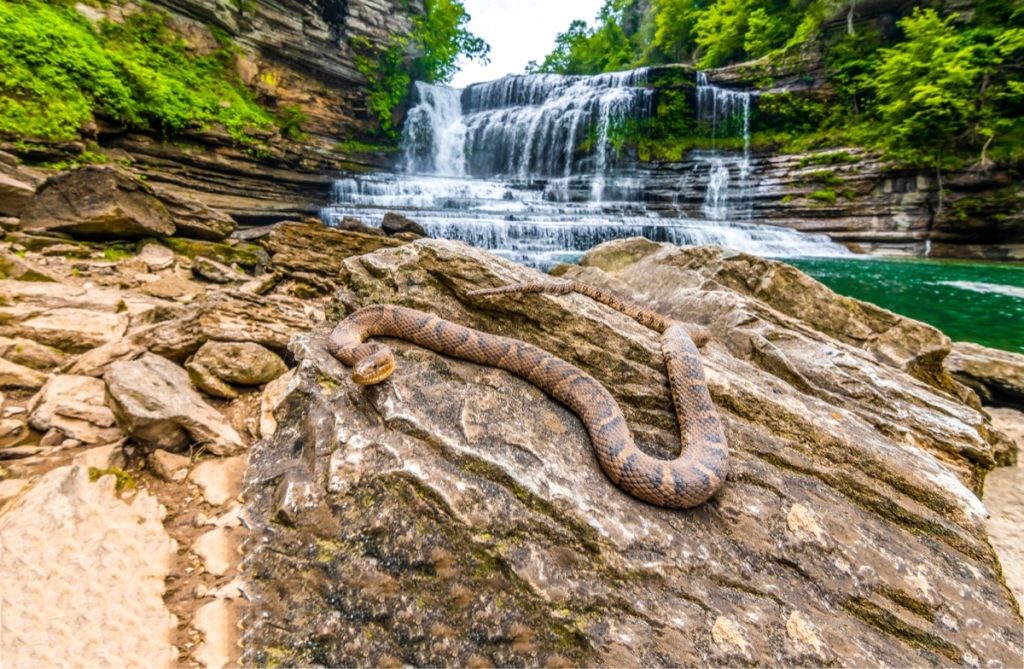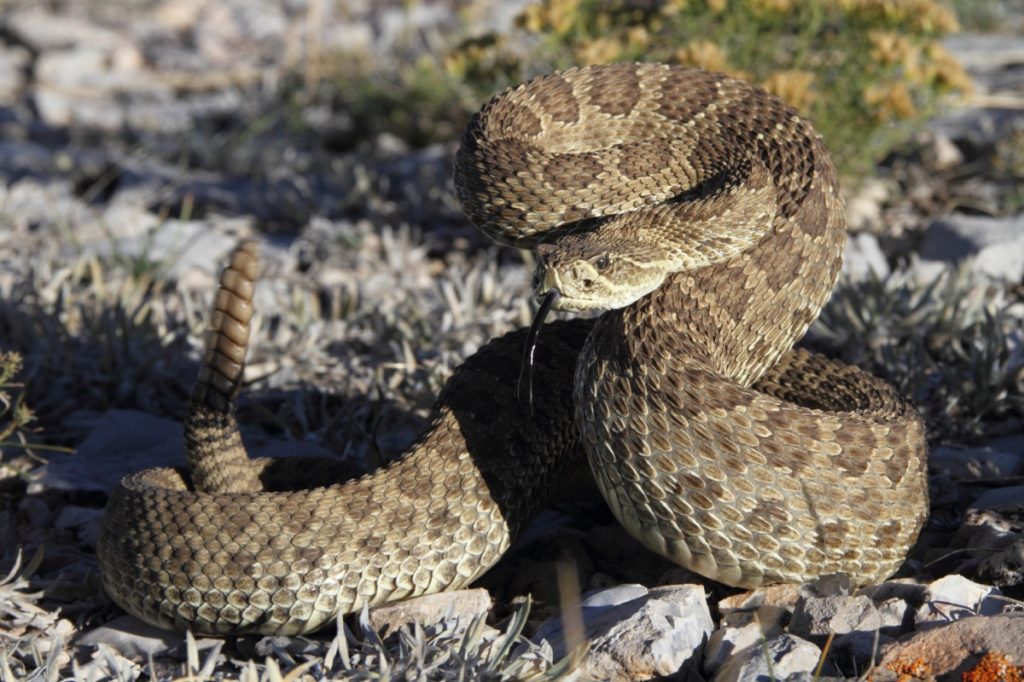Venomous Snake Spotted Swimming Across Lake: “This Is a New Fear”

Any time spent in nature comes with the risk of encountering wildlife—including venomous snakes. Fortunately, most people know to be on the lookout when taking a hike or doing yard work around their property. But what some may not realize is that reptiles can also make their way into the water. And now, a viral video has spotted a venomous snake swimming across a lake and shocking onlookers. Read on to see what you should be looking for the next time you go to take a dip.
READ THIS NEXT: Invasive 200-Pound Pythons Are Spreading in the U.S.—And Eradication “Is Not Possible”.
A family recently captured footage of a rattlesnake swimming through a lake.

Spending a day on the water can be a great way to relax in warm weather. But in one recent incident, a family was shocked to come across a venomous snake swimming near their boat during an outing to Lopez Lake Recreation Area in California.
“I was driving [the] boat and [my] husband noticed something swimming across the water,” Janet Harshbarger told the San Luis Obispo Tribune. “We were just south of the marina in the ‘no wake’ zone. So we weren’t moving fast. We decided to circle it and see what kind of snake [it was], and sure enough, it was a rattlesnake.”
Commenters expressed shock at the sight of the snake making its way across the water.

After realizing the snake was venomous, Harshbarger posted the video to Facebook to warn her friends and any others who may be on the lake to keep an eye out. Soon, users had discovered the footage—with many saying it turned them off from getting in the water.
“Snakes can swim!?!?!? This is a new fear!” one user wrote.
“And that is why I would never get in that lake!” another exclaimed.
But despite the public response, Harshbarger says the sighting didn’t hamper their plans. “We hung out all day on rafts and paddleboards anyway,” she told the Tribune. “Just kept our eyes open for additional swimming snakes.”
RELATED: For more up-to-date information, sign up for our daily newsletter.
Experts say recent weather could be to blame for the incident.

While many understand they need to be aware of potentially camouflaged reptiles on land, the idea of them also being a potential risk on the water could unlock new phobias for some people. However, experts say the latest incident doesn’t necessarily mean venomous snakes are regularly taking a dip.
“It’s not really common, but it does happen,” Supervising Park Ranger Brian Wilder told the Tribune. “I think it’s probably a little more prevalent this year just because of the way that the lake [water level] came up so quickly—a lot of times they get displaced from their burrows underground. So a lot of times they end up swimming to try to find a place to go.”
As cold-blooded animals, rattlesnakes can also use bodies of water to cool down on hot days, according to Lou Fraser, owner of Reptile Removal USA. However, when they decide to swim longer distances, they’re usually focused on getting somewhere else and not attacking anything.
“Its sole mission is to from point A to point B,” Fraser told local Sacramento ABC affiliate KXTV, noting that the snakes are even less aggressive while in water than when on land. “It’s not going to come after you.”
Here’s how to protect yourself from rattlesnakes while on the water.

If you’re concerned about coming across a rattlesnake during your next day on the water, Wilder says staying safe essentially follows the same rules as encountering one on land: Simply leave it alone.
“It’s not their natural environment,” Wilder told the Tribune. “They’re looking to get to land and find another place to be safe. So I would definitely steer clear of any snakes in the water.”
The California Department of Fish and Wildlife also warns that anyone on the water shouldn’t grab floating “sticks” to avoid accidentally disturbing a swimming rattlesnake. It’s also essential to carefully check any rocks or stumps along the shoreline before climbing or sitting on them.
And while this “new fear” might stick out in some people’s minds, it’s still important to remember that our outdoor activities are actually putting us on the snake’s turf. “It really is human encroachment of their habitat,” Fraser told KXTV.